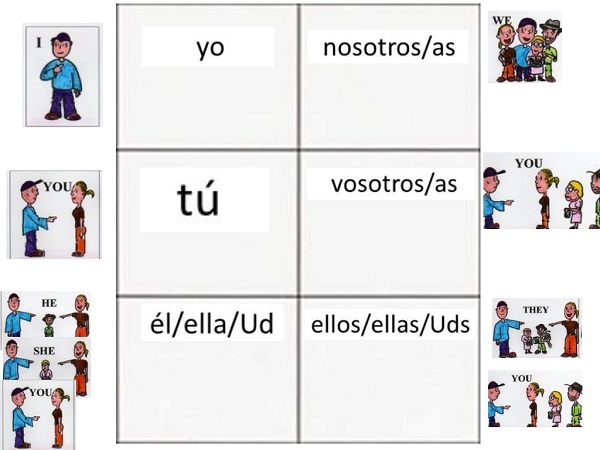2/1/22 Subject Pronouns
Hoy es el primero de febrero 2022
Objective: Students will learn and practice their subject pronouns

Learning Activities:
- Listening Comprehension
- Complete Take 20 Online Practice Actvities
-
- Upload screen shots
-
- Study Buddy: Task Cards
- Subject Pronoun Quiz
HOMEWORK (Or in class if you have time)
Subject Pronouns
A subject in a sentence is the noun that is completing the action of the sentence. For example, in the sentence "Jimmy eats pizza", eats is the action, and Jimmy is the one doing the eating. Therefore, Jimmy is the subject of the sentence.
A pronoun is a word that replaces a noun to avoid sounding repetitive. Instead of saying "Jimmy went to the store. Jimmy bought a shirt. Jimmy went home.", we can replace Jimmy with the pronoun he.
Therefore, a subject pronoun is a word that replaces the subject of your sentence. In English, subject pronouns are words like I, you, he, she, etc. In Spanish, there are 10 subject pronouns. They are listed below.
- yo - I (not capitalized unless at the beginning of a sentence)
- tú - you (singular & informal)
- él - he
- ella - she
- usted - you (singular & formal)
- nosotros/as - we
- vosotros/as - you (plural & informal, only used in Spain)
- ellos - they (masculine)
- ellas - they (feminine)
- ustedes - you (plural everywhere, plural & formal in Spain)
In order to form any complete sentence in Spanish, you must always have a subject and a verb. While you do not always need to use the subject pronoun in Spanish (your verb conjugation tells you the subject), it is important to know all 10 of these subject pronouns and how they're used in order to communicate effectively.